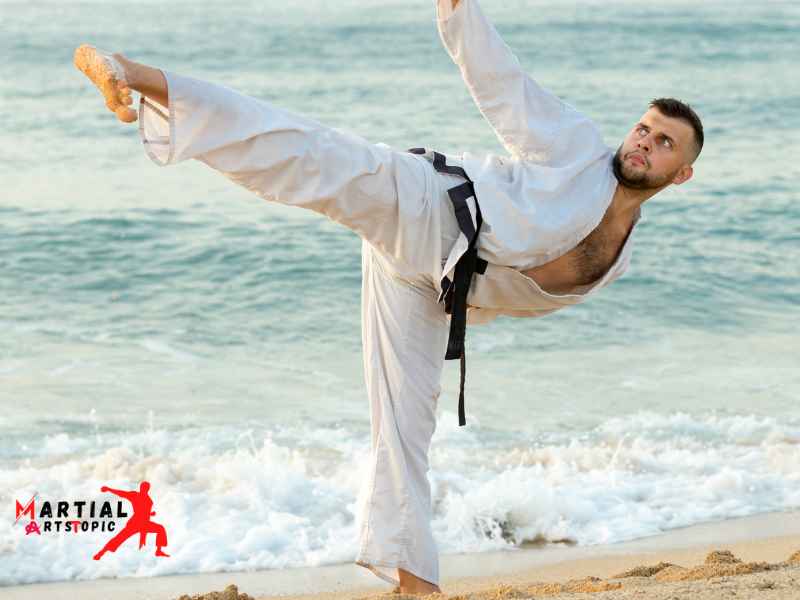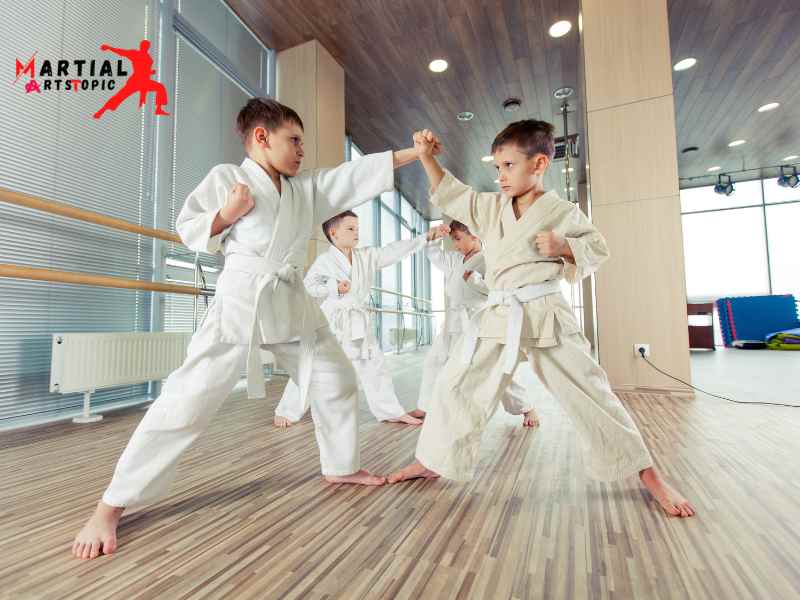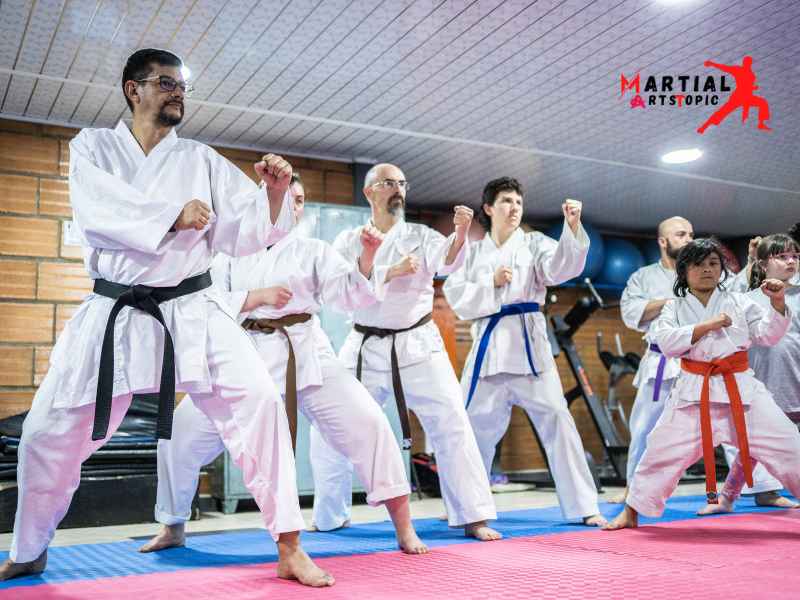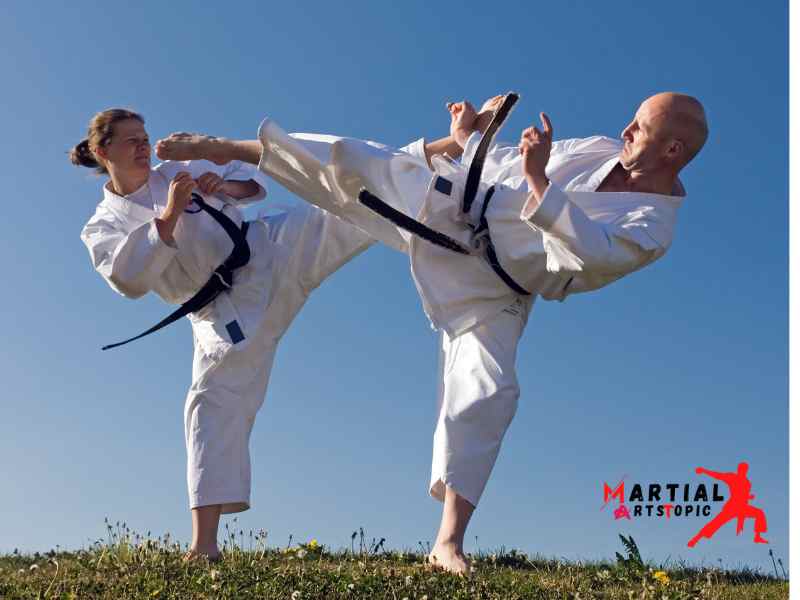
History and Origins of Shotokan Karate Kata
Shotokan Karate Kata: Unveiling the History and Origins Welcome to our blog post, where we dive deep into the captivating history and origins of Shotokan Karate Kata. As one of the most renowned martial arts disciplines, Shotokan Karate is a captivating blend of physical prowess, discipline, and ancient traditions. Kata, a fundamental aspect of Shotokan Karate, holds the key to unlocking the essence of this martial art form.
Understanding the Origins
To truly appreciate Shotokan Karate Kata, it is essential to explore its origins. Developed in Okinawa, Japan, by Gichin Funakoshi, Shotokan Karate emerged as a synthesis of various martial art styles. Funakoshi, along with his contemporaries, sought to preserve and promote the rich cultural heritage of Okinawa’s martial arts.
The Significance of Kata
Kata, meaning “form” or “pattern,” is a choreographed sequence of movements that simulates a real combat scenario. Shotokan Karate Kata encapsulates the essence of this martial art, encompassing a wide range of techniques, stances, and strategies. By practicing Kata, martial artists develop discipline, focus, and mastery of technique.
Exploring Shotokan Karate Kata
Shotokan Karate Kata is a series of prearranged movements performed solo or in pairs. It comprises 26 forms, each representing a different aspect of combat. These forms incorporate strikes, kicks, blocks, and movements that emphasize speed, power, and precision.
The Basics: A Guide to Shotokan Karate Kata for Beginners

Shotokan Karate Kata is a fundamental aspect of the martial art encompassing a series of prescribed movements, patterns, and techniques. For beginners looking to embark on their journey in Shotokan Karate, understanding and mastering the basics of kata is essential. In this comprehensive guide, we will delve into the world of Shotokan Karate Kata, providing beginners with a solid foundation to build upon.
Why are Shotokan Karate Kata important for beginners?
For beginners, Shotokan Karate Kata provides a structured framework to learn and practice the fundamental techniques of the martial art. Each kata incorporates various strikes, blocks, stances, and footwork, allowing beginners to develop a solid understanding of the core movements. By practicing kata diligently, beginners can build muscle memory, improve physical conditioning, and enhance their overall technique.
The Basic Shotokan Karate Kata for Beginners
- Taikyoku Shodan: This kata serves as an introduction to Shotokan Karate, focusing on basic stances, punches, and blocks. Taikyoku Shodan lays the foundation for subsequent katas and helps beginners develop a firm base.
- Heian Shodan: As the first of the Heian series, Heian Shodan introduces more advanced techniques, including kicks and combinations. This kata builds upon the skills acquired in Taikyoku Shodan and emphasizes proper body mechanics.
- Heian Nidan: Building upon the foundation set in Heian Shodan, Heian Nidan incorporates additional strikes, blocks, and footwork. It challenges beginners to improve coordination and timing.
- Heian Sandan: With a focus on circular movements and fluid transitions, Heian Sandan enhances the understanding of body dynamics. This kata emphasizes the importance of proper breathing and relaxation.
- Heian Yondan and Heian Godan: These katas further develop the techniques learned in the previous katas, introducing more complex combinations and advanced movements. Heian Yondan and Heian Godan help beginners refine their understanding of Shotokan Karate Kata.
Tips for Mastering Shotokan Karate Kata
- Practice regularly: Consistent practice is crucial for mastering Shotokan Karate Kata. Set aside dedicated time each day to practice the katas and focus on refining your technique.
- Pay attention to detail: Focus on perfecting each movement, paying attention to proper form, stances, and transitions. Minor details can make a significant difference in the execution of kata.
- Seek guidance from a qualified instructor: Working with a knowledgeable instructor is invaluable for beginners. They can provide guidance, correct mistakes, and offer personalized feedback to help you improve.
- Visualize opponents: When performing kata, imagine yourself in an actual combat situation. Visualize opponents attacking and defending against them with precision and intensity. This mental visualization can enhance the effectiveness of your kata performance.
Benefits of Practicing Shotokan Karate Kata
Shotokan Karate Kata is not just a sequence of movements but an art form that has been practiced for centuries. From developing physical strength and flexibility to cultivating mental discipline and self-confidence, Shotokan Karate Kata offers a multitude of benefits that extend beyond the dojo.
Enhances Physical Fitness
Shotokan Karate Kata is a rigorous physical activity that engages all major muscle groups, promoting overall strength, flexibility, and endurance. Each movement in the kata requires precise execution, which helps improve balance, coordination, and agility. Regular practice of Shotokan Karate Kata contributes to weight management, cardiovascular health, and increased physical stamina.
Boosts Mental Focus and Discipline
The intricate and detailed nature of Shotokan Karate Kata requires a high level of concentration and focus. Practitioners must memorize and execute a series of movements with precision and accuracy. Through disciplined practice, Shotokan Karate Kata instills mental fortitude and enhances the ability to concentrate, leading to improved focus in all aspects of life.
Enhances Self-Defense Skills
They rooted shotokan Karate Kata in the development of self-defense techniques. The kata sequences simulate combat scenarios and teach practitioners how to respond effectively in real-life situations. By practicing Shotokan Karate Kata, individuals gain confidence in their ability to defend themselves, promoting personal safety and security.
Cultivates Self-Confidence and Empowerment
The mastery of Shotokan Karate Kata builds a strong sense of self-confidence and empowerment. As practitioners progress in their training, they gain a deeper understanding of their physical capabilities and mental resilience. This newfound confidence extends beyond the dojo, positively affecting various aspects of life, such as personal relationships, academic or professional pursuits, and overall self-esteem.
Fosters a Sense of Community and Camaraderie
They often practiced shotokan Karate Kata in a group setting, fostering a sense of community and camaraderie among practitioners. Through shared experiences and mutual support, individuals develop lifelong friendships and a supportive network. The dojo becomes a space where individuals can connect, learn from one another, and grow together, creating a positive and encouraging environment.
Promotes Stress Relief and Mental Well-being
The practice of Shotokan Karate Kata serves as an excellent outlet for stress relief and promoting mental well-being. Engaging in physical activity releases endorphins, which help elevate mood and reduce stress levels. Moreover, the mental discipline fostered through Shotokan Karate Kata enables practitioners to approach challenges and setbacks with a calm and focused mindset.
Instills Values of Respect and Discipline
Something deeply rooted shotokan Karate Kata in traditional Japanese martial arts, emphasizing respect, discipline, and humility. Practitioners learn to respect their instructors, fellow practitioners, and the art itself. The discipline required in the practice of Shotokan Karate Kata translates into other areas of life, including work, relationships, and personal goals.
Training Tips for Shotokan Karate Kata

Training Tips for Shotokan Karate Kata: Master the Art of Form Shotokan Karate Kata is a traditional Japanese martial art form that focuses on precise movements, proper technique, and mental discipline. Whether you are a beginner or an advanced practitioner, mastering the art of kata requires dedication, practice, and the right training tips.
- Understand the Purpose: Shotokan Karate Kata is not just a sequence of movements; it embodies the principles and techniques of the art. Take the time to understand the purpose behind each kata. Research the history, meaning, and symbolism associated with each form. This knowledge will deepen your understanding of the art and help you perform kata with greater precision and intention.
- Focus on Technique: Shotokan Karate Kata demands proper technique and body mechanics. Pay attention to details such as stance, posture, and alignment. Practice each movement slowly and deliberately, ensuring that your technique is correct. It is better to perform a few movements flawlessly than rushing through the kata with sloppy technique.
- Break it down: Shotokan Karate Kata can be complex, with numerous movements and transitions. To avoid feeling overwhelmed, break down each kata into smaller sections. Master one section at a time before moving on to the next. This approach allows you to focus on refining your technique and memorizing the sequence more effectively.
- Visualize: Visualization is a powerful tool in kata training. Before physically performing a kata, visualize yourself executing the movements flawlessly. Imagine the timing, power, and precision of each technique. Visualization helps strengthen the mind-body connection, improving your overall performance and confidence.
- Practice with Purpose: Simply going through the motions is not enough. To truly master Shotokan Karate Kata, practice with purpose and mindfulness. Concentrate on every aspect of your performance, from breathing to timing to focus. Be present in the moment and strive for perfection in every repetition.
- Seek Feedback: Feedback from experienced instructors or fellow practitioners is invaluable in kata training. They can provide insights, corrections, and suggestions for improvement. Be open to constructive criticism and actively seek feedback to refine your technique and performance.
- Train Regularly: Consistency is key in Shotokan Karate Kata training. Make it a habit to practice regularly, even if it’s just for a few minutes each day. Regular training builds muscle memory, improves technique, and enhances overall performance. Set aside dedicated time for kata practice and commit to your training schedule.
- Record and Review: Recording your kata performances enables you to review your technique and identify areas for improvement. Set up a camera or use a smartphone to record your practice sessions. Take the time to analyze your performance, focusing on areas that need refinement. This self-evaluation will help you progress and grow as a practitioner.
- Challenge Yourself: Once you have mastered a kata, challenge yourself by increasing the speed, power, or intensity of your performance. Pushing your limits will help you develop stamina, improve focus, and refine your technique. Don’t settle for mediocrity; constantly strive for progress and excellence.
- Embrace the Journey: Shotokan Karate Kata is a lifelong journey. Embrace the process and enjoy every step of the way. Recognize that improvement takes time and effort. Celebrate your achievements, no matter how small, and maintain a positive mindset. With perseverance and dedication, you can continuously develop and excel in the art of Shotokan Karate Kata.
The Evolution of Shotokan Karate Kata: From Traditional to Modern
Shotokan Karate Kata has a rich history that spans centuries, growing from its traditional roots to embrace a more modern approach.
Shotokan Karate Kata, also known as forms or patterns, is a series of choreographed movements that simulate combat situations. This kata serve as a training tool to develop a karateka’s (karate practitioner) technique, power, and focus. Something deeply rooted the practice of kata in the ancient martial arts traditions of Japan.
Traditional Shotokan Karate Kata
The origins of Shotokan Karate Kata can be traced back to the Okinawan martial arts, particularly the Shuri-te and Naha-te styles. It was in the late 19th century when Master Gichin Funakoshi, known as the father of modern karate, introduced this kata to mainland Japan.
During this traditional phase, Shotokan Karate Kata focused on preserving the techniques and principles handed down from Okinawa. The emphasis was on mastering the fundamental movements, stances, and strikes. Kata such as Heian Shodan, Tekki Shodan, and Kanku Dai were practiced with the utmost precision and attention to detail.
Transition to a Modern Approach
As karate gained popularity, it began to spread beyond Japan and underwent further evolution. In the mid-20th century, various Shotokan Karate masters started experimenting with the kata, adapting them to suit their individual teaching styles and preferences.
One notable figure in this transition was Master Hirokazu Kanazawa, who introduced slight modifications to certain kata, emphasizing faster and more dynamic movements. This marked a shift towards a more practical and applicable approach to self-defense.
The Evolution of Shotokan Karate Kata
In recent years, Shotokan Karate Kata has continued to develop to meet the demands of modern times. With the advancement of sports karate and the competitive aspect of the art, kata has undergone further refinements.
Kata performance in modern Shotokan Karate competitions emphasizes speed, power, and precision. The focus has shifted towards delivering visually impressive performances that showcase athleticism, balance, and technical proficiency. This evolution has led to the creation of new kata variations and the development of more acrobatic movements.
However, it’s important to note that while modern Shotokan Karate Kata may differ in presentation and emphasis, the fundamental principles and techniques remain deeply rooted in tradition. The evolution of kata is a testament to the adaptability and growth of the art, while still honoring its historical roots.
The Different Styles of Shotokan Karate Kata

The Different Styles of Shotokan Karate Kata Shotokan Karate Kata is a traditional form of martial arts that originated in Japan. It is a highly disciplined and structured practice that focuses on the development of physical strength, mental focus, and spiritual growth. Shotokan Karate Kata consists of a series of choreographed movements and techniques that are performed in a specific sequence. These katas are an essential part of the training and progression in Shotokan Karate.
There are several styles of Shotokan Karate Kata, each with its own unique characteristics and emphasis. In this blog post, we will explore some of the most popular styles of Shotokan Karate Kata and their significance.
Taikyoku Kata
Taikyoku Kata is the most basic form of Shotokan Karate Kata. It consists of simple and repetitive movements that are designed to develop the fundamental techniques and stances of Shotokan Karate. Taikyoku Kata is often used as a warm-up exercise and serves as a foundation for more advanced katas.
Heian Kata
Heian Kata, also known as Pinan Kata in other styles of karate, is a series of five katas that are taught to beginners in Shotokan Karate. These katas focus on basic techniques, such as blocks, punches, and kicks, and are designed to develop coordination, balance, and fluidity of movement.
Tekki Kata
Tekki Kata, also known as Naihanchi Kata, is a series of three katas that focus on firm stances and linear movements. These katas emphasize close-quarters combat and are often practiced in a low and deep stance. Tekki Kata is known for its powerful techniques and is often considered an advanced form of Shotokan Karate.
Bassai Kata
Bassai Kata, also known as Passai Kata, is a powerful kata that focuses on explosive movements and powerful strikes. This kata incorporates a variety of techniques, including punches, kicks, blocks, and takedowns. They often performed Bassai Kata with speed and intensity, showcasing the practitioner’s strength and agility.
Kanku Kata
Kanku Kata, also known as Kusanku Kata, is a complex and intricate kata that requires a high level of skill and precision. This kata incorporates a wide range of techniques, including jumps, spins, and intricate hand movements. They often considered Kanku Kata a test of a practitioner’s mastery of Shotokan Karate.
Jion Kata
Jion Kata is a traditional kata that focuses on balance, control, and fluidity of movement. This kata emphasizes strong and precise techniques, with an emphasis on proper body alignment and posture. They often consider Jion Kata a meditative form of Shotokan Karate, promoting mindfulness and concentration.
Enhancing Self-Defense Techniques through Shotokan Karate Kata
Enhancing Self-Defense Techniques through Shotokan Karate Kata Shotokan Karate Kata holds a significant place in the world of martial arts. Originating from Japan, Shotokan Karate is renowned for its powerful strikes, fluid movements, and emphasis on self-defense. Kata, in particular, plays a crucial role in developing and enhancing self-defense techniques for practitioners of this ancient martial art.
What is Shotokan Karate Kata?
Kata, which means “form” or “pattern” in Japanese, is a series of choreographed movements that simulate combat scenarios. Shotokan Karate Kata consists of a sequence of kicks, punches, blocks, and stances that are performed in a specific order. These sequences are designed to teach practitioners various self-defense techniques and help them develop muscle memory, speed, precision, and focus.
Enhancing Self-Defense Techniques
Shotokan Karate Kata is a comprehensive training tool that enhances self-defense techniques in several ways:
- Muscle Memory: The regular practice of Kata helps develop muscle memory, allowing practitioners to react instinctively and quickly in real-life self-defense situations. By repeating the same movements over and over, the body becomes accustomed to executing them effortlessly and efficiently.
- Technique Refinement: Shotokan Karate Kata focuses on perfecting the execution of each movement. Practitioners learn to refine their techniques, ensuring that every punch, kick, and block is precise and powerful. This attention to detail translates into enhanced self-defense skills.
- Balance and Coordination: Kata places a strong emphasis on balance and coordination. The fluidity of movements requires practitioners to maintain a stable center of gravity while transitioning from one stance to another. This improved balance and coordination are invaluable in self-defense scenarios, allowing practitioners to react swiftly and effectively.
- Spatial Awareness: Shotokan Karate Kata trains practitioners to be aware of their surroundings at all times. By practicing the sequences in different directions and angles, practitioners develop a heightened sense of spatial awareness. This awareness helps them anticipate and respond to potential threats effectively.
- Mental Focus: Kata requires practitioners to maintain a high level of mental focus throughout the entire sequence. This intense concentration not only improves technique execution but also trains the mind to remain calm and alert in stressful situations, a vital aspect of self-defense.
- Adaptability: Shotokan Karate Kata consists of a wide variety of movements and techniques, which helps practitioners become adaptable in different self-defense scenarios. By practicing Kata regularly, practitioners become familiar with various combinations and transitions, enabling them to adapt their techniques to different situations.
- Confidence and Discipline: Regular practice of Shotokan Karate Kata builds confidence and discipline in practitioners. The mastery of complex sequences and the continuous improvement of techniques instill a sense of self-assurance, empowering individuals to defend themselves effectively if the need arises.
So, if you’re looking to enhance your self-defense techniques, consider incorporating Shotokan Karate Kata into your training routine. The benefits are far-reaching, enabling you to develop the skills and confidence needed to protect yourself effectively.
Tips and Techniques for Perfecting Your Shotokan Karate Kata

Tips and Techniques for Perfecting Your Shotokan Karate Kata Shotokan Karate Kata is a fundamental aspect of training in the martial art of Shotokan Karate. Kata, which means “form”, is a detailed choreographed pattern of movements that simulates a fight against multiple opponents. Shotokan Karate practitioners perform kata to improve their technique, focus, and overall physical conditioning.
Tips and techniques to help you perfect your Shotokan Karate Kata. Whether you are a beginner or an experienced practitioner, these insights will enhance your practice and take your kata performance to the next level.
- Understand the Purpose: Each Shotokan Karate Kata has a specific purpose, whether it is to develop speed, power, or fluidity of movement. Take the time to study and understand the underlying principles and objectives of each kata you practice. This understanding will enable you to perform the kata with greater precision and effectiveness.
- Focus on Proper Breathing. Breathing is an essential element in Shotokan Karate Kata. Proper breathing techniques not only help maintain stamina but also enhance focus and concentration. Coordinate your breath with each movement, exhaling during strikes and inhaling during transitions or moments of relaxation. This synchronized breathing will greatly improve the flow and rhythm of your kata.
- Pay Attention to Stances: Stances are the foundation of Shotokan Karate Kata. Ensure that you maintain correct posture and alignment in each stance, as it affects your balance, stability, and power generation. Practice each stance individually before integrating them into the kata sequence. This focused approach will help you develop a solid foundation for executing kata movements effectively.
- Emphasize Speed and Timing: Shotokan Karate Kata is not only about executing the movements correctly but also about performing them with speed and precision. Focus on improving your speed while maintaining control and accuracy. Additionally, pay attention to the timing of your movements, making sure that they flow seamlessly from one to another without pauses or hesitations.
- Visualize Your Opponents: Kata is an imaginary fight against multiple opponents. To enhance the realism of your kata, visualize opponents in different directions and adjust your movements accordingly. This visualization exercise will help you develop a sense of spatial awareness, improve your reflexes, and enhance the overall effectiveness of your kata performance.
- Seek Feedback and Practice Regularly: Improvement in Shotokan Karate Kata comes with consistent practice and feedback. Seek guidance from your instructor or more experienced practitioners to identify areas for improvement. Incorporate their feedback and dedicate regular practice time to refine your technique and enhance your kata performance.
- Maintain a Positive Mindset: Shotokan Karate Kata requires mental focus, discipline, and perseverance. Stay motivated and maintain a positive mindset throughout your training. Embrace challenges as opportunities for growth, and view each practice session as a chance to improve. A positive attitude will not only enhance your performance but also foster a deeper connection to the art of Shotokan Karate.
Conclusion
Shotokan Karate Kata is a fundamental aspect of this traditional martial art, providing practitioners with a systematic way to train their mind and body. Through the practice of kata, students can develop their technique, balance, and focus, while also cultivating discipline and self-control. The intricate movements and sequences of the kata also serve as self-expression and artistic interpretation, allowing karateka to showcase their skill and mastery. Whether it is for self-defense, physical fitness, or personal growth, the practice of Shotokan Karate Kata offers numerous benefits that can be applied both inside and outside the dojo. By dedicating time and effort to mastering these forms, practitioners can deepen their understanding of the art and continue to grow as martial artists.
